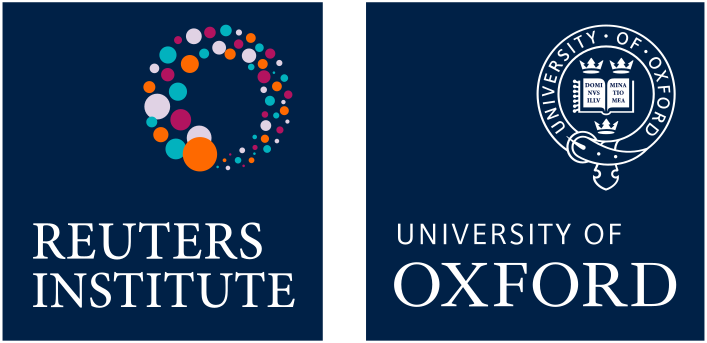
United States
The first months of the second Trump administration have brought what Reporters Without Borders calls a ‘war on the press’ on multiple fronts, from moves to defund public media and dismantle overseas broadcasting, to attacks on disfavoured news outlets via lawsuits, access restrictions, and federal investigations. The assault comes amid wider threats to independent US institutions, including universities, scientific agencies, and the legal profession.
President Trump's most public confrontation has been with the Associated Press, shut out of many White House events after failing to embrace his renaming of the Gulf of Mexico. Ordered by the courts to restore AP's access, the new administration responded by eliminating the permanent slot for newswires in the White House press pool. At the same time Trump has opened up access to creators and influencers, many of whom played a key role in his election success.
Meanwhile, Trump has repeated calls for broadcast network CBS – which he also privately sued for $20bn – to lose its broadcast licence, in response to coverage by flagship newsmagazine 60 Minutes that he said cast him in a negative light.1 As of April 2025, the US broadcast regulator under Trump has opened complaints against – or investigations into –legacy TV networks CBS, NBC, and ABC (but not right-leaning Fox), as well as public broadcasters PBS and NPR. The White House also proposes to eliminate federal support for the public service media, just weeks after an executive order all but shuttered Radio Free Europe and Voice of America.
The strategic landscape for major platforms is also in flux. In a dramatic shift, Mark Zuckerberg announced in January that Meta would end its paid partnerships with independent fact-checkers in the US – accusing them of ideological bias and censorship – and shift to a crowdsourced ‘community notes’ system like the one used on Elon Musk's X. TikTok unveiled its own version, called Footnotes, in April, but continues to work with US fact-checkers as well.
Meanwhile, Trump has railed against EU platform rules even while keeping Google and Meta in limbo about antitrust efforts inherited from the previous administration – widely seen as a way of maintaining leverage over the firms. In April, Trump approved a second extension for TikTok to find a buyer for its US operations to comply with a 2024 law.
In July 2024, a Trump campaign rally in Butler, Pennsylvania, took a shocking turn when a gunman opened fire, wounding Trump and two others and killing one. TV networks cut into regularly scheduled programming, with the main networks and cable news networks mostly praised for their ‘responsible coverage’.2 AP photographer Evan Vucci captured an image of Trump, blood smeared on his face from a grazed ear, raising his fist as an American flag waved in the background. The instantly iconic image ran on magazine covers, front pages, and websites around the world.
As the election neared, the Washington Post broke with decades of precedent, and caught its own newsroom off guard, by choosing not to endorse a presidential candidate. Former Executive Editor Marty Baron called the decision ‘cowardice, a moment of darkness that will leave democracy as a casualty’. Some readers cancelled their subscriptions in protest. Los Angeles Times owner Patrick Soon-Shiong also blocked the editorial board’s endorsement of Democratic candidate Kamala Harris, leading the editorials editor, Mariel Garza, and two editorial board members to resign.
In a March 2025 controversy dubbed ‘Signalgate’, Trump administration officials used an unsecured Signal chat to discuss an imminent bombing campaign in Yemen – with an audience that inadvertently included Atlantic magazine Editor Jeffrey Goldberg. In April, the New York Times reported that Defense Secretary Pete Hegseth shared details about the Yemen strike in another Signal chat with friends and family, leading to further calls for his resignation.
Criticism has continued to mount against Washington Post chief executive Will Lewis for a string of controversial decisions, including a newsroom overhaul that pushed out Executive Editor Sally Buzbee and prompted several journalists to depart for competitors. Layoffs continued at national news organisations, including the Post cutting about 100 across its business division, the Associated Press reducing its workforce by 8%, HuffPost laying off nearly 30 staff, and Vox Media 12 employees.
Notable shake-ups in the broadcast and cable landscape include MSNBC cutting ties with host Joy Reid; Lester Holt stepping down as anchor of NBC Nightly News; and Jim Acosta, anchor and former chief White House correspondent, leaving CNN. The troubled news network’s chief, Mark Thompson, has teased plans for a subscription-based, lifestyle-focused ‘non-news digital product’ in 2025.3
As the local news crisis continues, student journalists have increasingly stepped in to fill in gaps, including in areas classified as news deserts. The University of Vermont’s Community News Service offers local outlets student-reported stories, supervised by a professional editor, which operates in addition to more than 120 programmes around the country.
Lucas Graves
University of Wisconsin-Madison
Joy Jenkins
University of Missouri
Changing media
Right-leaning Fox News has gained audience in the last year as Donald Trump swept back to power, but CNN has not benefited as many progressives pull back from the news. Social media consumption has also surged (+6pp) amid an intense political climate.
Pay for online news
20%
Trust in news overall
30%
(-2)
=39/48
Trust in news I use
46%
Overall trust remains at the lower end of our international survey, with most brands seeing a dip in their trust scores in the last year. Among the brands included in our survey, local TV news and local newspapers remain most trusted, along with the BBC and long-established broadcast networks CBS and ABC. But trust levels for other brands are adversely affected by the highly polarised US market.

